Tiny Habits
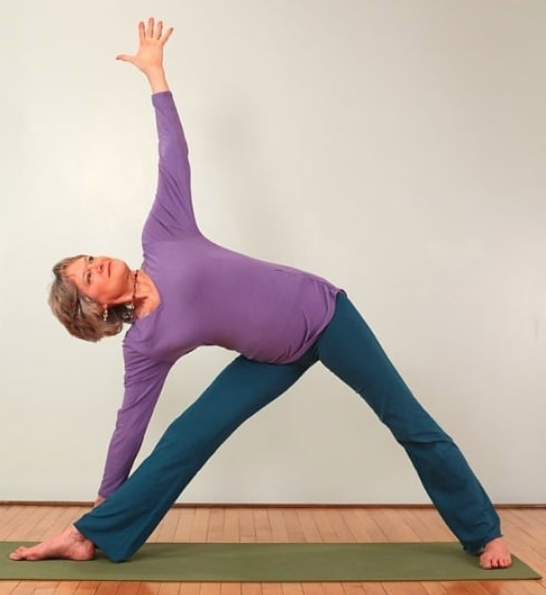
Did you make any New Year’s resolution about your physical health? Many people resolve to exercise more, lose weight, get rid of an unwanted habit, or some combination of those goals. But the complexity of life can so easily take over and dislodge even the best intentions.
The other day, I heard an author speak on NPR about how to establish new good habits and get rid of “bad” ones. His name is BJ Fogg, and his book is Tiny Habits, The Small Changes that Change Everything. As you can guess from the title, the trick is to take small steps toward your goal. Instead of resolving to do an hour of yoga a day or taking class once a week, you can set the goal of doing one or two poses each day on your own. Make the “tiny” effort, and you’ll feel the results and probably want to do more.
Instead of approaching a complex chronic pain issue with the pressure of “solving it”, you can explore one small strategy on a regular basis, like doing ten minutes of ballwork, or one targeted stretch or strengthening exercise. Gradually you will gain momentum and your practice will mature.
For example, watch this short 4 minute video to experience Bodymind Ballwork and how it relieves tension in your hips, thighs, knees, lower legs and ankles.
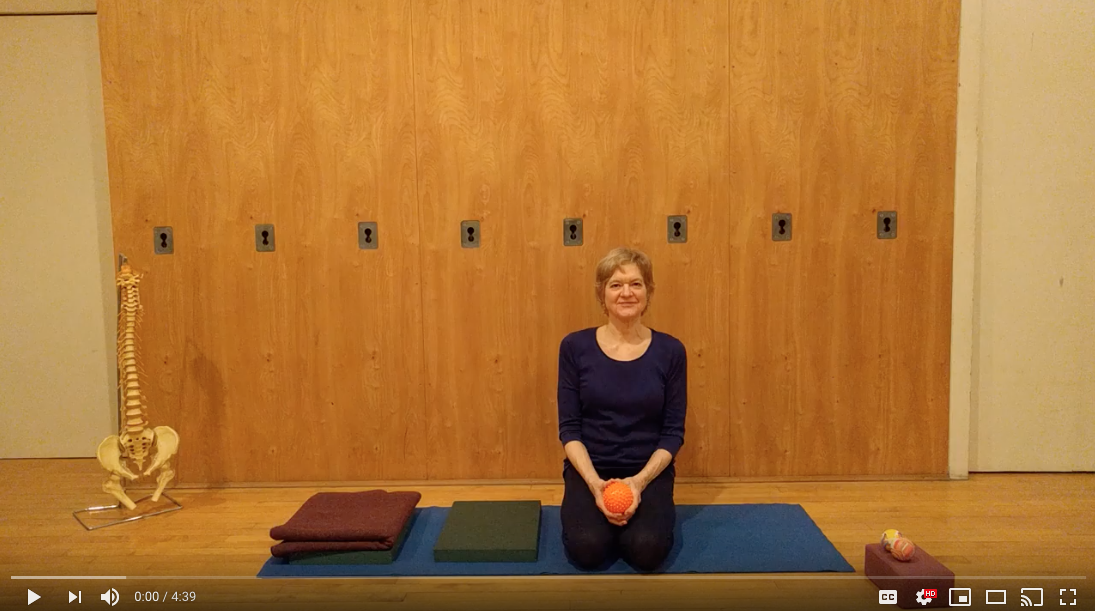
The next part of the method is to schedule the activity to give you a daily prompt. Some examples: Right after you shower and get dressed in the morning, you can do some stretches to fully wake up your body and your breath. Or: Right before dinner, you can do a few strengthening exercises, or you can meditate for whatever period of time you have – from 5-20 minutes. As another teacher put it, think “Small, Scheduled, and Specific”. It’ll put you on the path, and once you’re on it, there will be enough to learn and enjoy that you’ll want to continue.
You can join me in NYC any time, every week (Wednesday 12-2) for a class with Bodymind Ballwork and yoga. See the schedule of that and other classes here. I also offer multiple workshops throughout the year in New York and beyond. To see where and when I’ll be teaching, check in often here.

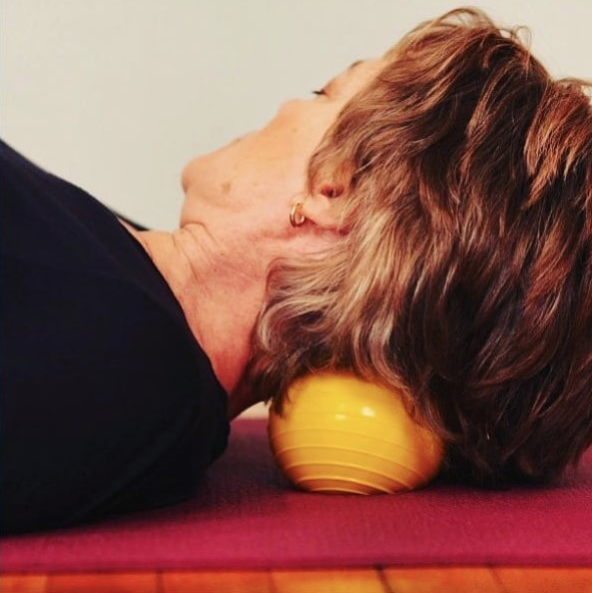 How’s your interoception? In case you’re not familiar with that word, it’s the inner felt sense of the body, including being warm or cold, hungry or full, tired or energized, stiff or flexible. Interoception is increasingly seen as a crucial component of health by twenty-first century researchers, especially in how it bridges the gap between physical and emotional experience. Recent research shows that well-developed interoception can lessen our experience of pain, which might surprise you. In other words, the more we are in touch with our inner world of sensation, the more we can adapt our behaviors to lessen the causes of pain. When our interoception is faulty and we are disconnected from the body, we are more vulnerable to anxiety and depression.
How’s your interoception? In case you’re not familiar with that word, it’s the inner felt sense of the body, including being warm or cold, hungry or full, tired or energized, stiff or flexible. Interoception is increasingly seen as a crucial component of health by twenty-first century researchers, especially in how it bridges the gap between physical and emotional experience. Recent research shows that well-developed interoception can lessen our experience of pain, which might surprise you. In other words, the more we are in touch with our inner world of sensation, the more we can adapt our behaviors to lessen the causes of pain. When our interoception is faulty and we are disconnected from the body, we are more vulnerable to anxiety and depression.
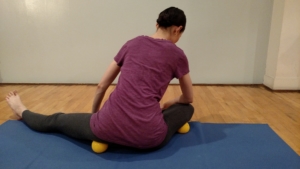
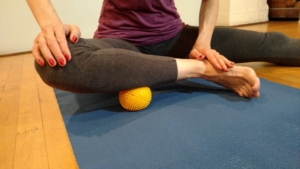
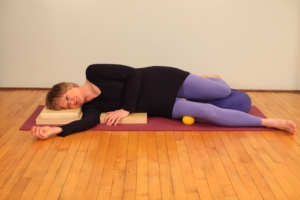 3. Lying on your side with one 3-4” hollow ball: Start by arranging props to support your upper body well while lying on your side. In this photo I have one pad under my ribs, two under my head, and a space between them for my shoulder.
3. Lying on your side with one 3-4” hollow ball: Start by arranging props to support your upper body well while lying on your side. In this photo I have one pad under my ribs, two under my head, and a space between them for my shoulder.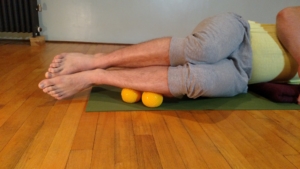 4. Lying on your side with two small solid balls under the side of your lower leg: Support your upper body in the same way as in #3 above.
4. Lying on your side with two small solid balls under the side of your lower leg: Support your upper body in the same way as in #3 above.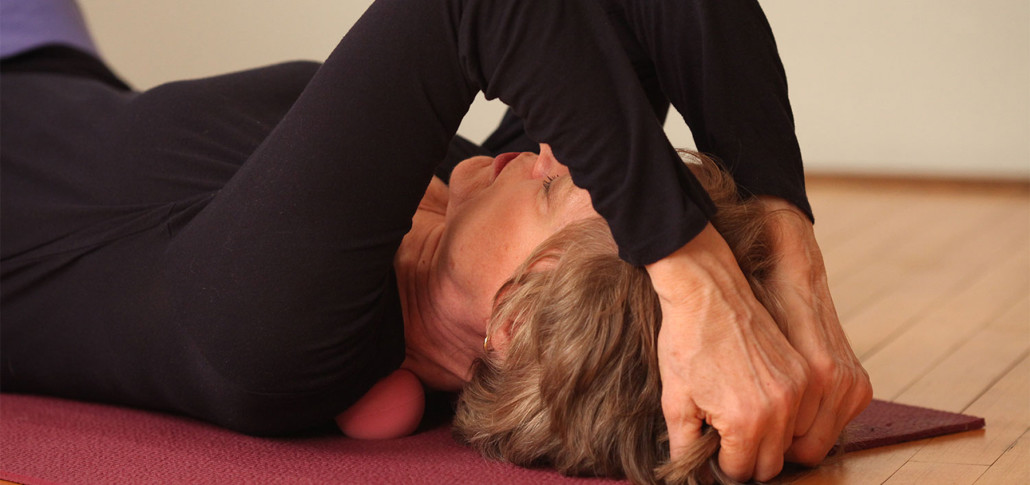
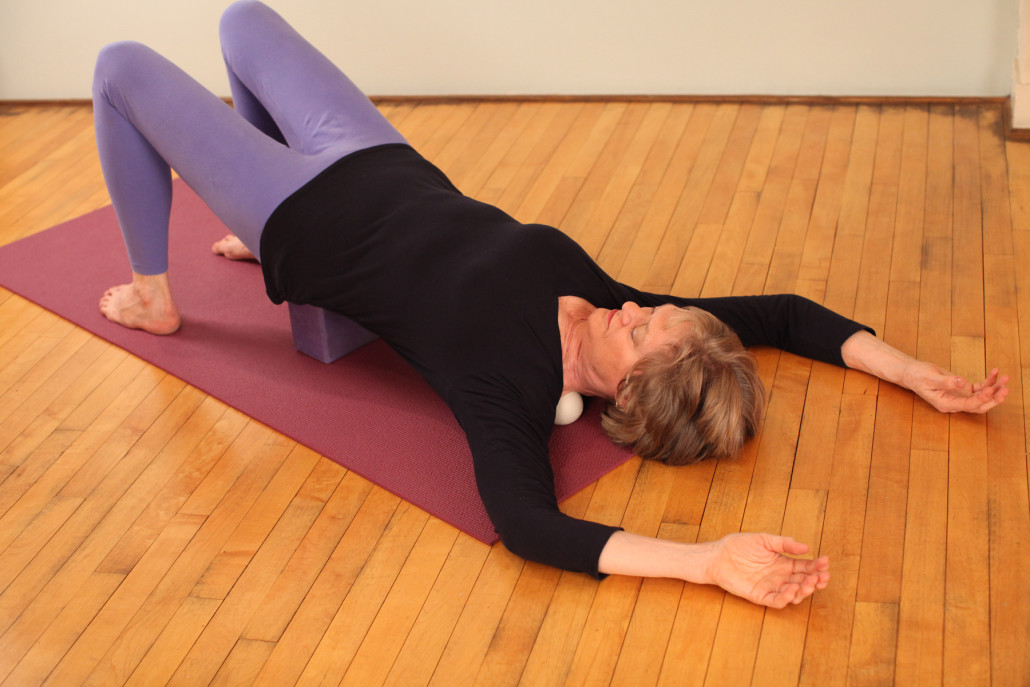 2) Extend your arms overhead, resting your hands on the bolster or on the floor. Settle in this new position, and feel the difference in sensation where the balls are. If they have slipped out of place, just reach back with one hand to reposition them.
2) Extend your arms overhead, resting your hands on the bolster or on the floor. Settle in this new position, and feel the difference in sensation where the balls are. If they have slipped out of place, just reach back with one hand to reposition them.